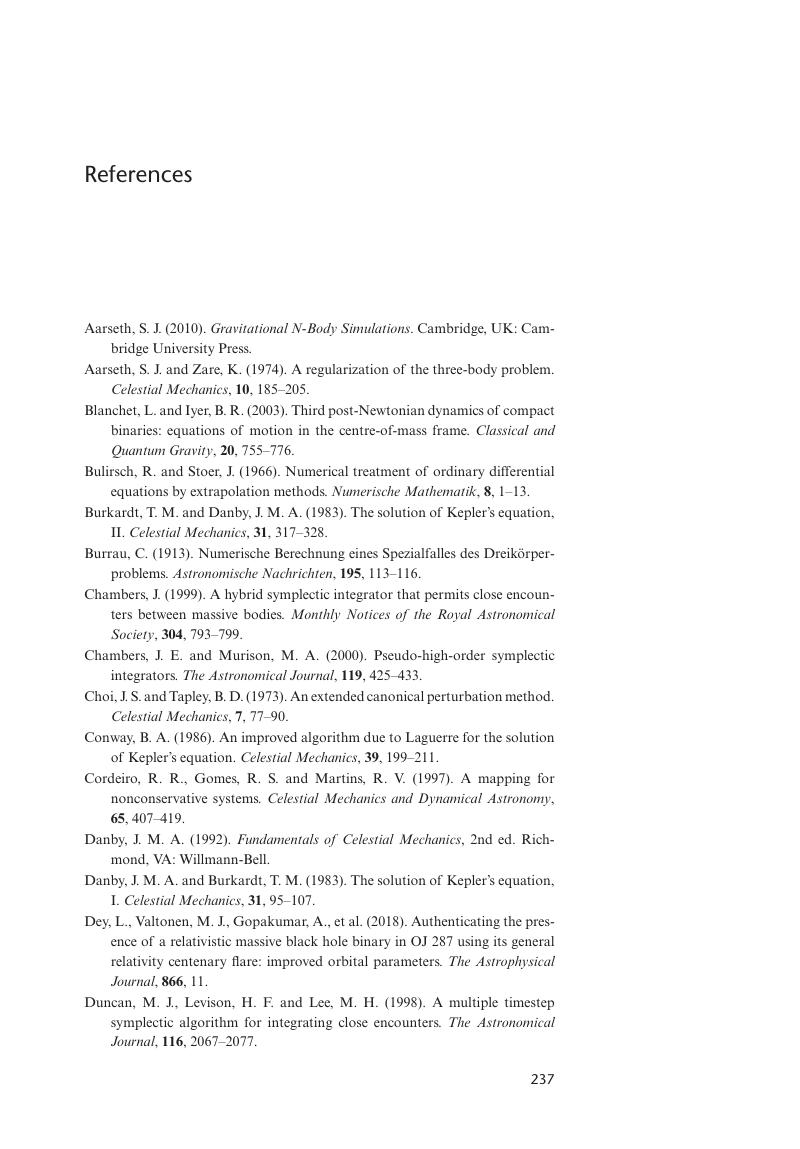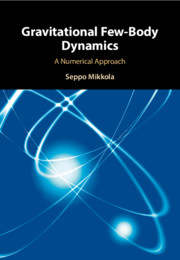Book contents
- Frontmatter
- Dedication
- Contents
- Preface
- Introduction
- 1 The Problems
- 2 Two-Body Motion
- 3 Analytical Tools
- 4 Variation of Parameters
- 5 Numerical Integration
- 6 Symplectic Integration
- 7 KS-Regularization
- 8 Algorithmic Regularization
- 9 Motion in the Field of a Black Hole
- 10 Artificial Satellite Orbits
- References
- Index
- References
References
Published online by Cambridge University Press: 06 April 2020
- Frontmatter
- Dedication
- Contents
- Preface
- Introduction
- 1 The Problems
- 2 Two-Body Motion
- 3 Analytical Tools
- 4 Variation of Parameters
- 5 Numerical Integration
- 6 Symplectic Integration
- 7 KS-Regularization
- 8 Algorithmic Regularization
- 9 Motion in the Field of a Black Hole
- 10 Artificial Satellite Orbits
- References
- Index
- References
Summary

- Type
- Chapter
- Information
- Gravitational Few-Body DynamicsA Numerical Approach, pp. 237 - 242Publisher: Cambridge University PressPrint publication year: 2020

